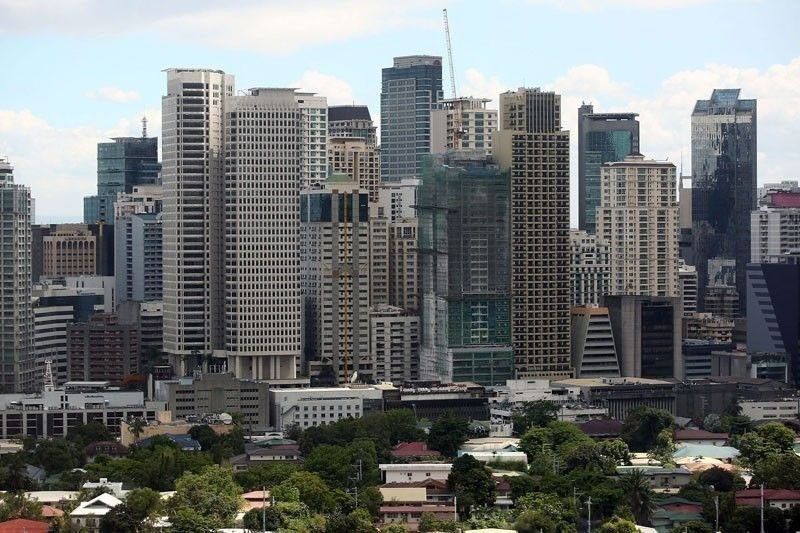Philippines to lead growth in ASEAN+3

MANILA, Philippines — The Philippines is expected to post the fastest economic growth in the Association of Southeast Asian Nations Plus 3 this year and the next, according to the ASEAN+3 Macroeconomic Research Office (AMRO).
The ASEAN+3 Regional Economic Outlook (AREO) 2024 report released yesterday showed the AMRO expects the Philippine economy to grow by 6.3 percent this year – unchanged from the growth forecast it provided in January.
This growth forecast is higher than the revised 5.5 percent growth posted last year and is within the government’s adjusted growth target of six to seven percent for this year.
“(The) 6.3 percent (growth) is a very strong performance, among the highest in the region,” AMRO chief economist Hoe Ee Khor said in a briefing yesterday.
AMRO’s growth forecast for the Philippines for this year is higher than its projections for other economies in the region such as Cambodia (6.2 percent), Vietnam (six percent), China (5.3 percent), Indonesia (5.2 percent), Malaysia (five percent), Lao People’s Democratic Republic (4.7 percent), Hong Kong (3.5 percent), Myanmar (3.2 percent), Thailand (2.9 percent), Brunei (2.7 percent), Singapore (2.6 percent), South Korea (2.3 percent) and Japan (1.1 percent).
The 2024 gross domestic product (GDP) forecast for the Philippines is also higher than AMRO’s projected growth rates for ASEAN+3 and Southeast Asia.
AMRO expects ASEAN+3 to expand by 4.5 percent this year, faster than the 4.3 percent growth in 2023, while ASEAN is projected to grow by 4.8 percent this year from the previous year’s 4.2 percent.
The stronger growth for ASEAN+3 this year is expected to be driven by robust domestic demand amid increasing household incomes and investment activity.
In addition, the anticipated turnaround in exports, in part due to the global chips upcycle and the continued recovery of tourism, will also support stronger growth in the region this year.
“The Philippines will also benefit from an upswing in terms of external demand. The manufacturing sector will benefit from that and also the recovery in tourism,” Khor said.
For next year, AMRO expects the Philippines to expand at a faster pace of 6.5 percent, within the government’s revised 6.5 to 7.5 percent growth target.
AMRO’s 2025 GDP forecast for the Philippines, if realized, will make the country the fastest-growing economy along with Vietnam in ASEAN+3 next year.
The growth forecast for the Philippines next year is also higher than AMRO’s projected 4.2 percent growth for ASEAN+3 and 4.9 percent expansion for ASEAN in 2025.
In terms of the inflation outlook, AMRO expects inflation in the Philippines to ease to 3.6 percent this year and further to 2.9 percent next year after last year’s six percent, which was above the two to four percent target range of the Bangko Sentral ng Pilipinas (BSP).
“Inflation is still on the high side and I think the (BSP) governor has expressed the view they are going to wait until inflation has come off more before they will start to feel comfortable about easing. So when this is going to happen, we don’t really know. I think there is a slight risk this year, because of the synchronized upswing in the global economy, inflationary pressure may actually be on the upside rather than on the downside. It may slowdown the moderation in the growth rate and in which case, then it will delay any easing in monetary policy,” Khor said.
Khor said risks that could affect ASEAN+3’s growth trajectory are a sudden spike in global commodity prices, weaker-than-expected growth in China and a sharp slowdown in the US and Europe.
In terms of longer term challenges the region would face, AMRO cited aging, global trade reconfiguration and rapid technological changes.
Allen Ng, AMRO group head and one of the lead authors of the AREO report, said aging is posing a challenge to the region, with becoming old before becoming rich a concern for many economies in the region.
While aging is happening, he said the region’s population is also living longer and healthier.
He said policies that will allow people to remain productive at an older age would be crucial for the region’s future.
Similar to aging, AMRO believes addressing concerns on global trade reconfiguration and the impact of rising technologies such as Generative AI on industries and jobs would require policies.
“Navigating these crosscurrents requires prioritizing robust policies to secure growth under various possible futures. For ASEAN+3, this includes deepening infrastructure development as well as promoting innovation and social inclusion,” Ng said.
- Latest
- Trending





























